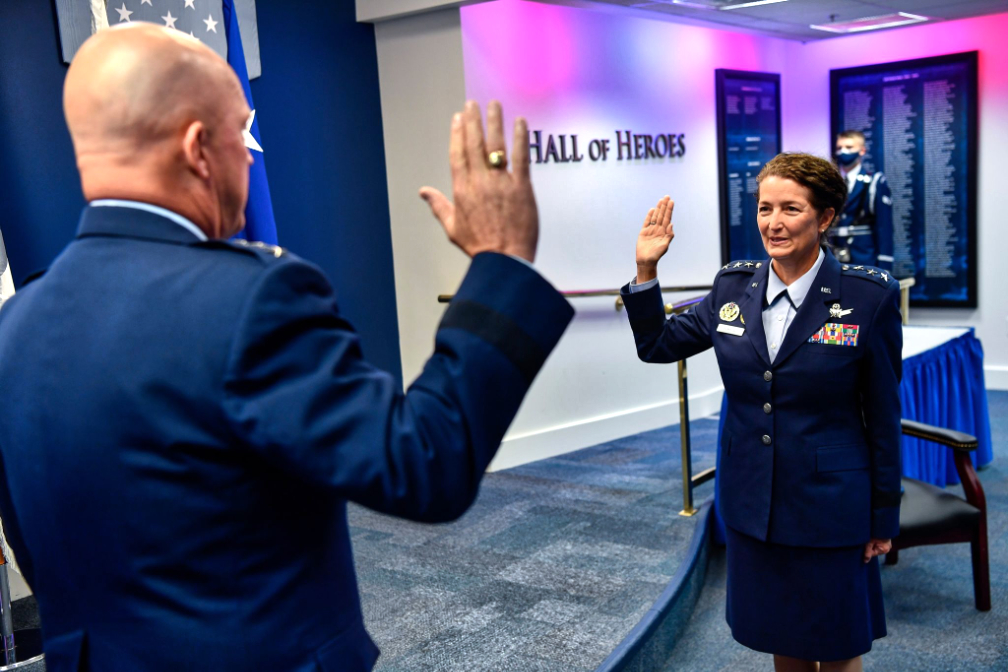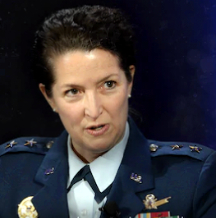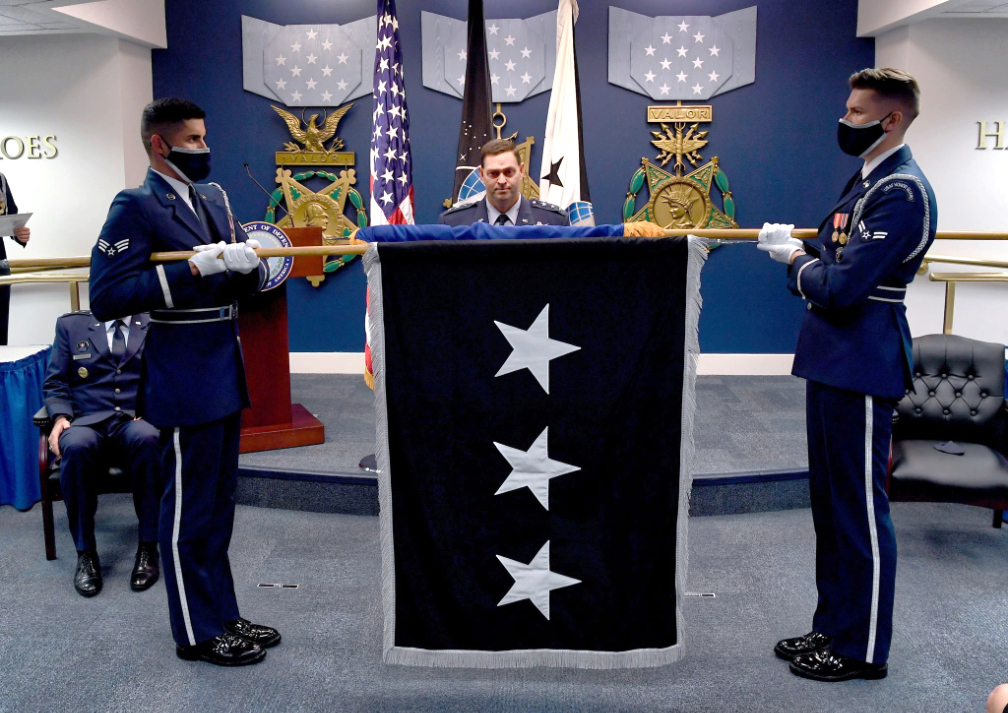
In a significant milestone for the nation’s newest armed service, Lt. General Nina Armagno became the first female officer to promote to three-star general and transfer into the U.S. Space Force during a ceremony at the Pentagon, August 17.

Armagno will serve as the director of staff for Headquarters U.S. Space Force, where she will oversee day to day staff operations to include establishment activities for the new service.

“We’re starting fresh. We’re starting a clean sheet,” Armagno said. “We’re going to be agile, we’re going to be nimble, and we’re going to bring the best of everything into the space force.”
General John W. “Jay” Raymond, Chief of Space Operations, officiated the ceremony and said Armagno was the correct choice for the position for three qualities. She is a space expert, has broad experience as a commander and leader and is a mentor and teacher to everyone.
“It is absolutely my honor to promote Nina as a lieutenant general in the United States Space Force,” Raymond said. “This is a big job, and I’ll tell you as much momentum as we have, as much as we’ve gotten done, there’s 20 times more to do. Having your leadership to guide the staff to get this right for our nation is going to be really important, and I couldn’t think of a better officer to do that.”
Armagno earned her commission from the Air Force Academy in 1988. After graduating from Undergraduate Space Training in 1988, she served as a combat-mission-ready operator, instructor, evaluator and flight commander in strategic missile warning, space surveillance, space control, space launch and theater missile warning mission areas.
Armagno holds the unique distinction as the only Air Force officer to command both the U.S. Eastern and Western Ranges, culminating in an unprecedented, flawless record with more than 48 successful launch campaigns valued at more than $19 billion. She received the 2014 General Jerome F. O’Malley Distinguished Space Leadership Award, presented in part for her efforts to reorient Air Force philosophy to build the operational use of space systems at the highest levels of the Air Force.
During the ceremony, Armagno highlighted the leadership qualities she learned from space professionals throughout her career. She said that there is a Space Force today because of the incredible space leaders of the past.
“This is about the years before us, the leaders, the hundreds of thousands of Airmen who have been doing space for decades,” Armagno said. “These are the shoulders – the titans’ shoulders –the space force was built upon the shoulders we stand on today.”

Another crucial transfer and promotion involved Major General B. Chance Saltzman, who was the first U.S. Air Force general officer transferred and promoted to Lieutenant General in the U.S. Space Force during a ceremony at the Pentagon on August 14.
During the ceremony, members of the Air Force Honor Guard simultaneously furled the Air Force major general flag and unfurled the first-ever Space Force lieutenant general flag, marking the first promotion of a general officer in the new service.
“It’s a historic time in the space community and being given a leadership role and helping stand up the Space Force is truly humbling,” said Saltzman.

Saltzman’s new position is the Space Force Deputy Chief of Space operations, cyber and nuclear. As the Chief Operations Officer, he will have overall responsibility for intelligence, operations, sustainment, cyber and nuclear operations.
Chief of Space Operations General John “Jay” Raymond officiated the promotion ceremony and said, “I think it’s very appropriate that the first general who comes in is a warfighter. I think that sends a really strong message that this is an armed service, and we are about deterring conflict that could begin or extend into space. We couldn’t ask for a better person.”
Commissioned in 1991, Saltzman has operated missile and space systems as a Minuteman III launch officer and as a satellite operator for the National Reconnaissance Office (NRO), and was a key contributor in developing the Department of the Air Force’s Multi-Domain Command and Control, now known as Joint All Domain Command and Control.
Saltzman talked about the work ahead of him and the other Space Force leaders. He said space professionals, the whole service, and the country itself expect them to get it right.
“The best way I know how to meet these challenges and live up to the responsibilities that we’ve been entrusted with is just to get after it,” Saltzman said. “We’ll collaborate with smart people; we’ll do the critical thinking that’s necessary; we’ll make a good to-do list, and then we’ll start checking it off Semper Supra.”
